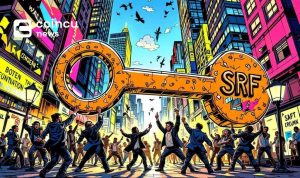Key Points:
- The US government has ordered the 16th largest commercial bank in the US, Silicon Valley Bank, to close and confiscate its assets.
- The FDIC said it would open the withdrawal gate for insured deposits with a value of less than $250,000 following Monday.
- This was the most severe bank failure since the 2008 Financial Crisis, with $209 billion in losses.
- Share prices of other central banks in the United States all recorded a sharp decrease in the trading session on March 10 after the news appeared.
After a week of fighting the crisis, the 16th largest commercial bank in the US, Silicon Valley Bank, was ordered by the US government to close and confiscate its assets. This is the biggest bank crash since 2008.

According to the United States Federal Deposit Insurance Corporation (FDIC) announcement, this unit and the California state government have decided to close Silicon Valley Bank and confiscate assets.
The FDIC said it would open the withdrawal gate for insured deposits with a value of less than $250,000 following Monday. Meanwhile, customers with uninsured deposits will receive a certificate of debt and wait until the FDIC liquidates the bank’s assets to receive compensation.
The above information officially marked the collapse of Silicon Valley Bank, the 16th largest commercial bank in the United States, with assets of 209 billion USD. Some major US newspapers even called this the most severe bank failure since the 2008 financial crisis, second only to Washington Mutual bank, which went bankrupt with assets of $ 307 billion.

Silicon Valley Bank earlier this week announced a loss of $21 billion in securities and announced plans to issue an additional $2.25 billion of shares to raise more money.
Investors immediately expressed concern at the unexpected developments from the bank, speculating that it might be short of money and deciding to withdraw money.
SIVB’s share price continuously dropped by over 60% for three consecutive days, which further caused a delay in the US market.
The concern of crypto investors right now is whether any projects, especially stablecoin issuers, keep money on Silicon Valley Bank. In response to the interest, Binance CEO Changpeng Zhao and a representative of stablecoin issuer Paxos have denied having any contact with Silicon Valley Bank.
It can be seen that not only are banks warning about contact with electronic money service providers, but legislative agencies in the US also are very active in monitoring and investigating to intervene promptly. The time from the discovery of the problem to the intervention of the FDIC is less than 5 days, much shorter than the crises in the crypto industry in 2022, such as LUNA-UST or FTX.
Following the news, the stock prices of other central banks in the United States recorded a sharp decrease in the trading session on March 10.

Before that, the crypto-friendly Silvergate Bank also had a rough time and decided to close.
DISCLAIMER: The Information on this website is provided as general market commentary and does not constitute investment advice. We encourage you to do your own research before investing.
Join us to keep track of news: https://linktr.ee/coincu
Foxy
Coincu News






















